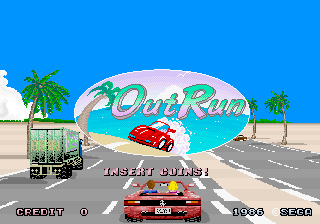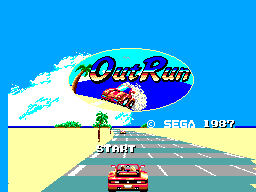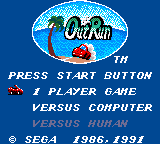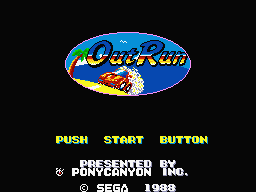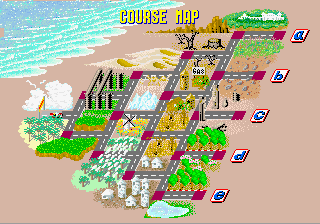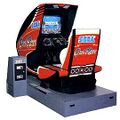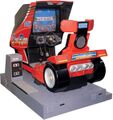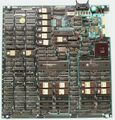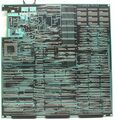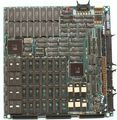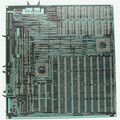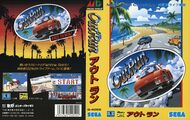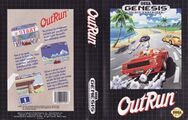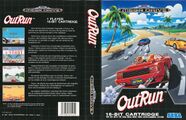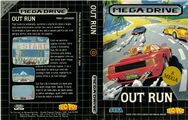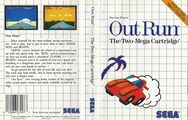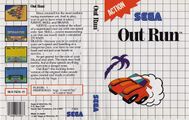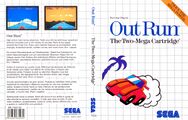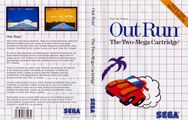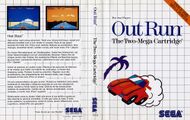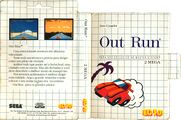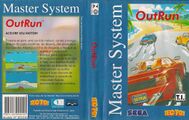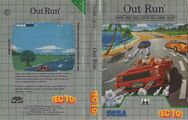OutRun
From Sega Retro
| |||||||||||||||||||||||||||||||||||||||||||||||||||||||||||||||||||||||||||||||||||||||||||||||||||||||||||||||||||||||||||||||||||||||||||||||||||||||||||
| OutRun | |||||||||||||||||||||||||||||||||||||||||||||||||||||||||||||||||||||||||||||||||||||||||||||||||||||||||||||||||||||||||||||||||||||||||||||||||||||||||||
|---|---|---|---|---|---|---|---|---|---|---|---|---|---|---|---|---|---|---|---|---|---|---|---|---|---|---|---|---|---|---|---|---|---|---|---|---|---|---|---|---|---|---|---|---|---|---|---|---|---|---|---|---|---|---|---|---|---|---|---|---|---|---|---|---|---|---|---|---|---|---|---|---|---|---|---|---|---|---|---|---|---|---|---|---|---|---|---|---|---|---|---|---|---|---|---|---|---|---|---|---|---|---|---|---|---|---|---|---|---|---|---|---|---|---|---|---|---|---|---|---|---|---|---|---|---|---|---|---|---|---|---|---|---|---|---|---|---|---|---|---|---|---|---|---|---|---|---|---|---|---|---|---|---|---|---|
| System(s): Sega OutRun hardware, Sega Mega Drive, Sega Master System, Sega Game Gear, MSX2, PC Engine | |||||||||||||||||||||||||||||||||||||||||||||||||||||||||||||||||||||||||||||||||||||||||||||||||||||||||||||||||||||||||||||||||||||||||||||||||||||||||||
| Publisher: Sega Enterprises, Ltd. Pony Canyon NEC Avenue | |||||||||||||||||||||||||||||||||||||||||||||||||||||||||||||||||||||||||||||||||||||||||||||||||||||||||||||||||||||||||||||||||||||||||||||||||||||||||||
| Developer: Sega R&D 1 Sega R&D 2 SIMS[1] Hertz Pony Canyon NEC Avenue | |||||||||||||||||||||||||||||||||||||||||||||||||||||||||||||||||||||||||||||||||||||||||||||||||||||||||||||||||||||||||||||||||||||||||||||||||||||||||||
| Supporting companies: T's Music (audio) | |||||||||||||||||||||||||||||||||||||||||||||||||||||||||||||||||||||||||||||||||||||||||||||||||||||||||||||||||||||||||||||||||||||||||||||||||||||||||||
| Distributor: Unidesa (ES) Hent Gruppen (SE rental) Tec Toy (BR) Samsung (KR) | |||||||||||||||||||||||||||||||||||||||||||||||||||||||||||||||||||||||||||||||||||||||||||||||||||||||||||||||||||||||||||||||||||||||||||||||||||||||||||
| Licensor: Sega Enterprises, Ltd. | |||||||||||||||||||||||||||||||||||||||||||||||||||||||||||||||||||||||||||||||||||||||||||||||||||||||||||||||||||||||||||||||||||||||||||||||||||||||||||
| Sound driver: SMPS Z80 | |||||||||||||||||||||||||||||||||||||||||||||||||||||||||||||||||||||||||||||||||||||||||||||||||||||||||||||||||||||||||||||||||||||||||||||||||||||||||||
| Peripherals supported: Gear-to-Gear Cable, FM Sound Unit, Paddle Control | |||||||||||||||||||||||||||||||||||||||||||||||||||||||||||||||||||||||||||||||||||||||||||||||||||||||||||||||||||||||||||||||||||||||||||||||||||||||||||
| Genre: Racing[2][3][4][5][6], Driving[7], Action[8] | |||||||||||||||||||||||||||||||||||||||||||||||||||||||||||||||||||||||||||||||||||||||||||||||||||||||||||||||||||||||||||||||||||||||||||||||||||||||||||
| Number of players: 1 1-2 | |||||||||||||||||||||||||||||||||||||||||||||||||||||||||||||||||||||||||||||||||||||||||||||||||||||||||||||||||||||||||||||||||||||||||||||||||||||||||||
|
- For non-MSX2 home computer versions, see OutRun (home computers).
OutRun (アウトラン) is an arcade game developed by Studio 128 in 1986 for specially designed hardware. It was designed by Yu Suzuki, and is often considered a milestone in the driving/racing genre, being ported to numerous home platforms and inspiring several sequels. Rather than be classed as a "racing game", Yu Suzuki classifies OutRun as a "driving game".
Contents
Gameplay
The goal of OutRun is to simply drive your sports car to one of the five goals, labelled "a" to "e", without running out of time. A pedal accelerates the car, and a steering wheel moves it left and right on the road. Due to limitations in the technology, it is impossible to fully turn the car around, nor is it possible to reverse.
Crashing into either other cars or scenery does not cause the player to lose lives, just time. After an area is cleared, checkpoints will allow the player to increase their time, and there will also be the option to select the next area through the form of a fork in the road. From a technical standpoint, every area is exactly the same length, though twists and turns can alter the amount of time needed to complete them. There are five possible endings, each with their own closing cinematic.
The car has two gears, high and low. When in the high gear, the car becomes harder to control, however the top speed of the vehicle is increased. To be successful in OutRun the player needs to switch between gears at the appropriate moments, e.g. switching to the lower gear while negotiating tricky roads, or if the player has just crashed.
The number of lanes of traffic also differs between stages. Although there is never a situation in OutRun where the cars travel in the opposite direction to yourself, the introductory level for example has six lanes of traffic.
Course Layout
Some stages appear in a different order between the Japanese and overseas releases of the game:
Japanese version
| Stage Number | Goal name | ||||
|---|---|---|---|---|---|
| 1 | 2 | 3 | 4 | 5 | |
| Vineyard | A | ||||
| Wilderness | |||||
| Desert | Death Valley | B | |||
| Wheat Field | Old Capital | ||||
| Coconut Beach | Alps | Desolation Hill | C | ||
| Cloudy Mountain | Gateway | ||||
| Devil's Canyon | Autobahn | D | |||
| Seaside Town | |||||
| Lakeside | E | ||||
Overseas version
| Stage Number | Goal name | ||||
|---|---|---|---|---|---|
| 1 | 2 | 3 | 4 | 5 | |
| Vineyard | A | ||||
| Wilderness | |||||
| Desert | Death Valley | B | |||
| Gateway | Old Capital | ||||
| Coconut Beach | Alps | Desolation Hill | C | ||
| Devil's Canyon | Wheat Field | ||||
| Cloudy Mountain | Autobahn | D | |||
| Seaside Town | |||||
| Lakeside | E | ||||
Coconut beach was later used as a stage in Sega Superstars Tennis.
Easter Eggs
- The arcade version of OutRun contains one known Easter egg. It is accessed in different ways depending on which revision of the hardware is used. With revision A, holding down START just before a checkpoint will display the message "PROGRAM YU SUZUKI 1986 SEP" will appear on screen. In revision B, the user is required to obtain a high score under the name "YU." first, then perform this code during the stage 2-3 transition. In revision B, the code can only be activated once, and if two instances of "YU." are recorded in the high score screen, the code will fail.
- The Mega Drive version adds a fourth BGM track to choose during gameplay called Step on Beat, which shares the same frequency as Splash Wave (80.3). This is notably more concealed than the additional tracks made for the previously released OutRun 3D, wherein one is given an entirely new frequency between two preexisting ones.
History
Development
OutRun was designed by Yu Suzuki, and for the most part stands as the logical progression from the earlier Hang-On (and to a lesser extent, Space Harrier). All three make use of Super Scaler technology in an attempt to deliver a sense of speed and deliver a 3D look and feel. It is said Suzuki got the idea for producing OutRun from the 1981 film The Cannonball Run.
Initially the plan had been to follow the course of The Cannonball Run, however Suzuki noted that the course lacked the variation in scenery he had hoped for. Instead, the attention turned to Europe, but in order to get a clearer vision of its scenery, Suzuki decided to travel and collect data first hand.
| “ | I started out from Frankfurt, where I hired a rent a car, and I installed a video camera on the car. I drove around Monaco and Monte Carlo, along the mountain roads of Switzerland, stopping in hotels in Milan, Venice, and Rome, collecting data for a fortnight. | „ |
— Yu Suzuki | ||
Interestingly the first sequel to OutRun, Turbo OutRun would span North America, though Europe would be explored in more detail in another sequel OutRun Europa.
Yu Suzuki is noted for being a fan of Ferrari supercars, and although OutRun is not officially licensed by Ferrari, the player's car looks strikingly similar to a Ferrari Testarossa, right down to the rear badge. Suzuki first encountered this car in Monaco, and decided it was the perfect choice for the game. Unfortunately at the time the car was not common in Japan, which presented difficulties when it came to road testing. Allegedly five members of Sega AM2 squeezed into a privately owned model for a three hour road test during development. They also took photos and recorded the sound of the car's engine.
The specific Testarossa in OutRun is a work of fiction, as Ferrari did not produce convertible models (save for a special silver "spider" model for Gianni Agnelli, which has an entirely different rear grill). Third-parties would sell modified convertible Testarossas later in the decade with a similar appearance, but this was after OutRun's launch.
The Ferrari Testarossa in game attempts to simulate the real-life features of the car, e.g. horsepower, torque, tires, gears etc. Suzuki designed OutRun in a very different way to previous racing games - in OutRun, good real-life drivers are rewarded for their skills in game, and bumping into other vehicles does not cause the car to explode (unlike many other older racers).
Sega did not consult Ferrari over the inclusion of the Testarossa in game, and would later meet in court several times over the matter. It is assumed a deal was reached as the car has never been modified for any future releases, and in fact, Ferrari have gone as far officially sponsor several racing games, starting with F355 Challenge (also designed by Yu Suzuki) and OutRun 2 and its derivatives. Other cars on the road appear to be a 1972 Volkswagen Beetle, a 1971 Chevrolet Corvette, a 1985 Porsche 911, a 1985 BMW 325i Cabriolet E30 and a generic truck.
The music of OutRun was composed by famed Sega musician, Hiroshi Miyauchi, and was extremely popular. Each of the three in-game music tracks were much longer and more varied than what other arcade games were offering at the time, and unlike every other racing game on the market, OutRun allowed the user to pick a music track to race with. Originally the soundtrack was to consist of eight different rock tracks running at 150 beats per minute, though hardware restrictions forced this idea to be scrapped.
Suzuki claims he was only able to achieve half of his original goal in OutRun. Originally eight different sports cars were planned with differing stats, and cutscenes were due to occur at checkpoints, giving the player a story. Some of these features would be added in later OutRun games.
OutRun came in four distinct styles of arcade cabinet, two upright and two sit-down. Each comes with a steering wheel and stick shift plus acceleration and brake pedals. Though steering wheels had appeared in countless Arcade games previous to Sega's game, OutRun was the first to have force feedback in order to simulate the road surface. The deluxe sit-down cabinet is also equipped with hydraulics which move the seat as the player turns.
The game has been decompiled[27], with the process revealing several interesting facts about the game. Unused code allows traffic to move towards the camera, and an unused "You're Doing Great" sample from Space Harrier exists. The game is also capable of showing "lap times" (the time taken to complete an area - OutRun has no concept of "real" laps). Much of the code from the game would be recycled for games such as Super Hang-On.
Two revisions of the game are known to exist - the latter adding some extra text to the music selection screen and adjusting the first area slightly. Depending on version or region, the track layout can also differ.
Sales
Upon release, individual Out Run machines were each earning ¥65,000 per day at test locations, surpassing the ¥56,000/day average earned by Hang-On machines. Sega initially projected OutRun to sell 3,000 arcade units in Japan and 10,000 units overseas.[28]
OutRun went on to the best-selling arcade game of 1986, with over 20,000 cabinets sold worldwide within a year. It eventually sold 30,000 arcade cabinets worldwide by 1993.[29]
Legacy
OutRun was a pioneer in video game graphics, audio and arcade cabinet design, picking up multiple awards during the late 1980s.
OutRun was a big success in arcades, so it was inevitable that ports would be made to home platforms. At the time, these systems were seen to be vastly inferior to the hardware powering OutRun, and numerous cuts were made.
Pony Canyon handled an MSX2 conversion which only saw release in Japan. There is also a PC Engine port, published by NEC Avenue. An X68000 port by Hertz was planned, but cancelled, according to an interview with a former staff member[30]. Reportedly a Sega 32X version was also in development at one stage[31].
Sega were also quick to port the game to their own systems. Sega Master System and Sega Game Gear ports were handled in-house by Sega, as was a Sega Mega Drive version, seen for a while to be the best home port of OutRun with faithful stages design and which even includes an exclusive music track called Step on Beat.
A Sega Saturn version of the game was only released as a stand alone title in Japan as part of their Sega Ages series. It was later bundled with Space Harrier and After Burner II to make the western title Sega Ages: Volume 1. Since then, the majority of home ports of the game have been almost identical to their original arcade counterpart, with the exception of mobile phone versions and the version included in the 2004 Sega Arcade Gallery Game Boy Advance compilation (whose resolution was changed to fit the console's smaller screen).
OutRun was also released as part of the Sega Ages 2500 PlayStation 2 series in Japan, and is fully playable within Shenmue and Shenmue II. The Shenmue versions alter the player's car so that it looks less like a Testarossa, as does the one version included in Yu Suzuki Game Works Vol. 1. OutRun is also unlockable within the Xbox port of OutRun 2 SP.
The game saw many sequels, however the "true" sequel comes in the form of Turbo OutRun, a 1989 arcade release also by Sega AM2. By obtaining a kit from Sega, arcade owners were able to "upgrade" OutRun into Turbo OutRun, as the two games run on identical hardware. Turbo OutRun offers several new graphical features and a turbo button.
In late 1987 footage from OutRun was used in a 30-second television advert in the United States to warn against drink driving (the idea being to convey that crashing in a video game as a result of alcohol has no real life consequences). A joint project between the Mothers Against Drunk Driving (MADD) and American Amusement Machine Association (AAMA), Sega agreed to remove its name and logos for what it perceived was the greater good[32].
OutRun has also left a lasting legacy in music. An entire genre of music is named after OutRun, called outrun music, also known as synthwave. The genre name "outrun" is due to how Hiroshi Kawaguchi's OutRun soundtrack has the kind of 80s synth vibe that characterizes synthwave.
Outrun was one of the most popular arcade machines of the 90s in Poland and one machine cost around 3,500 PLN in 1997.[33]
The MSX2 version of OutRun received ROM patches made by ToughkidCST in September 2024 that makes use of the MSX-MUSIC standard (YM2413), featuring arranged soundtracks from the Arcade version, alongside a patch that features soundtrack from OutRun 3D in their FM Sound Unit versions[34].
Versions
Localised names
| Language | Localised Name | English Translation |
|---|---|---|
| English | OutRun | OutRun |
| English (US) | OutRun | OutRun |
| Japanese | アウトラン | OutRun |
| Portuguese (Brazil) | OutRun | |
| Korean | 아웃런 | OutRun |
Production credits
- Main article: OutRun/Production credits.
Hints
Digital manuals
Magazine articles
- Main article: OutRun/Magazine articles.
Promotional material
- Main article: OutRun/Promotional material.
Artwork
Photo gallery
Physical scans
Arcade version
| Sega Retro Average | |||||||||
|---|---|---|---|---|---|---|---|---|---|
|
| 90 | |
|---|---|
| Based on 1 review | |
| Arcade, US (standard) | ||||
|---|---|---|---|---|
| Arcade, US (mini) | ||||
|---|---|---|---|---|
Mega-Tech version
Mega Drive version
| 69 | |
|---|---|
| Based on 35 reviews | |
| Mega Drive, BX† |
|---|
| Mega Drive, SE (rental; Hent; black) |
|---|
| Mega Drive, AU |
|---|
|
Master System version
| Sega Retro Average | |||||||||||||||||||||||||||||||||||||||||||||||||||||||||||||||||||||||||||||||||||||||||||||||||||
|---|---|---|---|---|---|---|---|---|---|---|---|---|---|---|---|---|---|---|---|---|---|---|---|---|---|---|---|---|---|---|---|---|---|---|---|---|---|---|---|---|---|---|---|---|---|---|---|---|---|---|---|---|---|---|---|---|---|---|---|---|---|---|---|---|---|---|---|---|---|---|---|---|---|---|---|---|---|---|---|---|---|---|---|---|---|---|---|---|---|---|---|---|---|---|---|---|---|---|---|
|
| 80 | |
|---|---|
| Based on 19 reviews | |
| Master System, SE |
|---|
|
| Master System, BX† |
|---|
|
| Master System, BR (re-release) |
|---|
Game Gear version
| Sega Retro Average | |||||||||||||||||||||||||||||||||||||||||||||||||||||||||||||||||||||||||||||||||||||||||||||||||||||||||||||
|---|---|---|---|---|---|---|---|---|---|---|---|---|---|---|---|---|---|---|---|---|---|---|---|---|---|---|---|---|---|---|---|---|---|---|---|---|---|---|---|---|---|---|---|---|---|---|---|---|---|---|---|---|---|---|---|---|---|---|---|---|---|---|---|---|---|---|---|---|---|---|---|---|---|---|---|---|---|---|---|---|---|---|---|---|---|---|---|---|---|---|---|---|---|---|---|---|---|---|---|---|---|---|---|---|---|---|---|---|---|
|
| 67 | |
|---|---|
| Based on 21 reviews | |
| Game Gear, JP (Meisaku Collection) |
|---|
| Game Gear, PT |
|---|
|
MSX2 version
PC Engine version
| Sega Retro Average | ||||||||||||||||||||||||||||||||||||||||||||
|---|---|---|---|---|---|---|---|---|---|---|---|---|---|---|---|---|---|---|---|---|---|---|---|---|---|---|---|---|---|---|---|---|---|---|---|---|---|---|---|---|---|---|---|---|
|
| 77 | |
|---|---|
| Based on 8 reviews | |
| PC Engine, JP |
|---|
Technical information
- Main article: OutRun/Technical information.
References
NEC Retro has more information related to OutRun
|
- ↑ Mega Drive Fan, "November 1991" (JP; 1991-10-08), page 99
- ↑ File:Outrun md jp cover.jpg
- ↑ 3.0 3.1 https://sega.jp/history/hard/megadrive/software.html (Wayback Machine: 2020-07-20 09:51)
- ↑ File:OutRun GG JP Box Front.jpg
- ↑ 5.0 5.1 https://sega.jp/history/hard/gamegear/software.html (Wayback Machine: 2018-12-07 04:57)
- ↑ 6.0 6.1 https://sega.jp/history/hard/segamark3/software.html (Wayback Machine: 2020-11-14 21:32)
- ↑ File:OutRun GG EU Box Back.jpg
- ↑ File:OutRun SMS US Box.jpg
- ↑ Mega Drive Fan, "February 1992" (JP; 1992-01-08), page 83 (81)
- ↑ 10.0 10.1 VideoGames & Computer Entertainment, "December 1991" (US; 1991-1x-xx), page 58
- ↑ Sega Power, "December 1991" (UK; 1991-10-30), page 11
- ↑ Sega Pro, "Christmas 1991" (UK; 1991-12-12), page 7
- ↑ Computer Entertainer, "November 1987" (US; 1987-11-xx), page 14
- ↑ 14.0 14.1 Computer & Video Games, "November 1987" (UK; 1987-10-15), page 132
- ↑ File:SMSGameCatalog2EU.pdf, page 3
- ↑ ACE, "January 1989" (UK; 1989-xx-xx), page 166
- ↑ Computer & Video Games, "April 1988" (UK; 1988-03-15), page 26
- ↑ The Mastertronic Catalogue (UK; 1988), page 2
- ↑ 19.0 19.1 Génération 4, "Janvier/Février 1988" (FR; 198x-xx-xx), page 43
- ↑ Computer Trade Weekly, "" (UK; 1991-10-21), page 21
- ↑ Computer Trade Weekly, "" (UK; 1991-11-04), page 27
- ↑ Games-X, "7th-13th November 1991" (UK; 1991-11-07), page 5
- ↑ Computer Trade Weekly, "" (UK; 1991-10-21), page 21
- ↑ Computer Trade Weekly, "" (UK; 1991-11-04), page 27
- ↑ 25.0 25.1 ACE, "January 1992" (UK; 1991-12-08), page 104
- ↑ Computer & Video Games, "November 1991" (UK; 1991-10-15), page 83
- ↑ http://reassembler.blogspot.co.uk/
- ↑ Game Machine, "1986-11-01" (JP; 1986-11-01), page 16
- ↑ Mean Machines Sega, "August 1994" (UK; 1994-06-30), page 92
- ↑ http://gdri.smspower.org/wiki/index.php/Interview:Tsunetomo_Sugawara
- ↑ GameFan, "Volume 3, Issue 3: March 1995" (US; 1995-xx-xx), page 114
- ↑ Cash Box, "December 12, 1987" (US; 1987-12-12), page 32
- ↑ https://archive.org/details/gambler_magazine-1997-04/page/n39/mode/2up?view=theater
- ↑ https://github.com/ToughkidDev/DKToolr/tree/main/4MsxBGM_Enhanced/OutRun_FM
- ↑ Commodore User, "March 1987" (UK; 1987-02-26), page 107
- ↑ 1700 igr dlya Sega, "" (RU; 2001-xx-xx), page 165
- ↑ Ação Games, "Abril 1992" (BR; 1992-04-xx), page 32
- ↑ Aktueller Software Markt, "November 1991" (DE; 1991-10-11), page 146
- ↑ Beep! MegaDrive, "September 1991" (JP; 1991-08-08), page 34
- ↑ Consoles +, "Septembre 1991" (FR; 1991-09-04), page 60
- ↑ Console XS, "June/July 1992" (UK; 1992-04-23), page 132
- ↑ Mean Machines: The Essential Sega Guide, "" (UK; 1993-11-18), page 76
- ↑ Famitsu, "1991-08-23,30" (JP; 1991-08-09), page 1
- ↑ Game Power, "Febbraio 1992" (IT; 1992-0-xx), page 56
- ↑ Gamers, "Februar/März 1992" (DE; 1992-xx-xx), page 46
- ↑ Games-X, "29th August-4th September 1991" (UK; 1991-08-29), page 37
- ↑ Game Informer, "Spring 1992" (US; 1992-0x-xx), page 7
- ↑ Game Players Sega Guide!, "Vol. 3, No. 1: February/March 1992" (US; 199x-xx-xx), page 71
- ↑ Hippon Super, "September 1991" (JP; 1991-08-03), page 90
- ↑ Hobby Consolas, "Enero 1992" (ES; 199x-xx-xx), page 16
- ↑ Joypad, "Octobre 1991" (FR; 1991-09-17), page 40
- ↑ Joystick, "Octobre 1991" (FR; 1991-xx-xx), page 166
- ↑ Sega Mega Drive Advanced Gaming, "January 1993" (UK; 199x-xx-xx), page 93
- ↑ Mega Drive Fan, "November 1991" (JP; 1991-10-08), page 91
- ↑ Mega, "June 1993" (UK; 1993-05-20), page 21
- ↑ Mega, "June 1994" (UK; 1994-05-19), page 65
- ↑ Mega Force, "Novembre 1991" (FR; 1991-11-19), page 77
- ↑ MegaTech, "Xmas 1991" (UK; 1991-12-06), page 79
- ↑ MegaTech, "August 1993" (UK; 1993-07-20), page 113
- ↑ Mean Machines, "October 1991" (UK; 1991-09-27), page 64
- ↑ Mean Machines Sega, "October 1992" (UK; 1992-09-xx), page 126
- ↑ Player One, "Novembre 1991" (FR; 1991-xx-xx), page 56
- ↑ Play Time, "2/92" (DE; 1992-01-08), page 91
- ↑ Sega Power, "November 1991" (UK; 1991-10-04), page 37
- ↑ Sega Pro, "April 1993" (UK; 1993-03-11), page 66
- ↑ Sega Force, "March 1992" (UK; 1992-02-20), page 68
- ↑ Sega Saturn Magazine, "September 1995" (JP; 1995-08-08), page 85
- ↑ Tricks 16 bit, "Tricks Sega Gold 800 igr" (RU; 1998-03-20), page 131
- ↑ Video Games, "4/91" (DE; 1991-12-06), page 33
- ↑ ACE, "November 1987" (UK; 1987-10-01), page 58
- ↑ Complete Guide to Consoles, "" (UK; 1989-10-16), page 63
- ↑ Complete Guide to Consoles, "Volume IV" (UK; 1990-11-xx), page 102
- ↑ The Complete Guide to Sega, "" (UK; 1991-05-xx), page 59
- ↑ Computer Action, "Juli/August 89" (DK; 1989-0x-xx), page 34
- ↑ Console XS, "June/July 1992" (UK; 1992-04-23), page 143
- ↑ Computer & Video Games, "October 1987" (UK; 1987-09-15), page 98
- ↑ Dragon, "Vol. XIII, No. 4: September 1988" (US; 1988-0x-xx), page 93
- ↑ The Games Machine, "xxxx 198x" (IT; 1988-12-15), page 44
- ↑ The Games Machine, "February 1988" (UK; 1988-01-21), page 61
- ↑ Games Preview, "8/9 1989" (DK; 1989-xx-xx), page 66
- ↑ Happy Computer, "Sonderheft #21: (4. Spiele-Sonderheft)" (DE; 1987-1x-xx), page 105
- ↑ Mean Machines Sega, "October 1992" (UK; 1992-09-xx), page 135
- ↑ Sega Power, "October 1991" (UK; 1991-09-05), page 58
- ↑ Sega Pro, "March 1992" (UK; 1992-02-20), page 20
- ↑ Sega Pro, "April 1993" (UK; 1993-03-11), page 71
- ↑ Soft, "" (DK; 1988-02-18), page 32
- ↑ Tilt, "Décembre 1987" (FR; 1987-1x-xx), page 98
- ↑ Aktueller Software Markt, "November 1991" (DE; 1991-10-11), page 150
- ↑ Beep! MegaDrive, "September 1991" (JP; 1991-08-08), page 36
- ↑ Consoles +, "Octobre 1991" (FR; 1991-10-05), page 131
- ↑ Consoles +, "Février 1992" (FR; 1992-0x-xx), page 95
- ↑ Console XS, "June/July 1992" (UK; 1992-04-23), page 148
- ↑ Computer & Video Games, "November 1991 (Go! Issue 1)" (UK; 1991-10-15), page 11
- ↑ Mean Machines: The Essential Sega Guide, "" (UK; 1993-11-18), page 168
- ↑ Game Power, "Dicembre 1991" (IT; 1991-1x-xx), page 72
- ↑ Games-X, "29th August-4th September 1991" (UK; 1991-08-29), page 38
- ↑ Game Zone, "November 1991" (UK; 1991-10-08), page 52
- ↑ Hippon Super, "September 1991" (JP; 1991-08-03), page 89
- ↑ Hobby Consolas, "Diciembre 1991" (ES; 1991-1x-xx), page 34
- ↑ Joystick, "Octobre 1991" (FR; 1991-xx-xx), page 134
- ↑ Micromanía (segunda época), "Enero 1992" (ES; 199x-xx-xx), page 53
- ↑ Mean Machines Sega, "October 1992" (UK; 1992-09-xx), page 131
- ↑ Power Play, "11/91" (DE; 1991-10-11), page 169
- ↑ Sega Power, "February 1992" (UK; 1992-01-02), page 52
- ↑ Sega Pro, "November 1991" (UK; 1991-xx-xx), page 40
- ↑ Sega Pro, "April 1993" (UK; 1993-03-11), page 74
- ↑ Sega Saturn Magazine, "September 1995" (JP; 1995-08-08), page 88
- ↑ Aktueller Software Markt, "März 1991" (DE; 1991-02-22), page 122
- ↑ Computer & Video Games, "March 1991" (UK; 1991-02-16), page 93
- ↑ The Games Machine, "Febbraio 1991" (IT; 1991-xx-xx), page 41
- ↑ Génération 4, "Février 1991" (FR; 1991-xx-xx), page 84
- ↑ Joystick, "Février 1991" (FR; 1991-0x-xx), page 127
- ↑ Player One, "Février 1991" (FR; 1991-xx-xx), page 45
- ↑ Power Play, "4/91" (DE; 1991-03-15), page 134
- ↑ Video Games, "1/91" (DE; 1991-03-27), page 92
| OutRun | |
|---|---|
|
Main page | Comparisons | Credits | Hidden content | Bugs | Development | Magazine articles | Reception | Promotional material | Region coding | Technical information | Bootlegs
Videos: OutRun (1987) | OutRun (1988) Events: OutRun Challenge Cup (1986) | |
| OutRun series of games | |
|---|---|
| OutRun (1986) | Turbo OutRun (1989) | OutRunners (1992) | OutRun 2 (2003) | OutRun 2 SP (2004) | OutRun 2 SP SDX (2006) | |
| OutRun (1987) | OutRun 3D (1988) | Battle OutRun (1989) | OutRun Europa (1991) | |
| OutRun (1987) | Turbo OutRun (1989) | OutRun Europa (1991) | OutRun 2006: Coast 2 Coast (2006) | |
| OutRun (1988) | |
| Turbo OutRun (1989) | |
| OutRun (1989) | OutRun F-1 (19xx) | |
| OutRun (1991) | Turbo OutRun (1992) | OutRun 2019 (1993) | OutRunners (1994) | Arcade Legends OutRun 2019 (200x) | |
| OutRun (1991) | OutRun Europa (1992) | |
| Sega Ages OutRun (1996) | |
| OutRun (2001) | |
| Sega Ages 2500 Series Vol. 13: OutRun (2004) | OutRun 2006: Coast 2 Coast (2006) | OutRun 2 SP (2007) | |
| OutRun 2 (2004) | OutRun 2006: Coast 2 Coast (2006) | |
| OutRun 2006: Coast 2 Coast (2006) | |
| OutRun Online Arcade (2009) | |
| 3D OutRun (2014) | |
| Sega Ages OutRun (2018) | |
| OutRun-related media | |
| OutRun (1992) | Virtua Racing & OutRunners (1993) | Yu Suzuki Produce OutRun (1997) | Sega Presents OutRun 2: Music Through the Ages (2004) | OutRun 2 Sound Tracks (2004) | OutRun 2 Sound Tracks: Side B (2005) | OutRun Sound Tracks: Complement (2007) | OutRun 20th Anniversary Box (2007) | OutRun (2016) | Sega Ages OutRun: Music Collection (2019) | |
| OutRun (1987) | OutRun (1988) | Super Monaco GP / Turbo OutRun (1989) | Out Run/Turbo Out Run Strategy Movie & S.S.T. Band Live+1 (2007) | |
- FM Sound Unit-compatible games
- Paddle Control-compatible games
- Gear-to-Gear Cable-compatible games
- 1-2 player games
- All arcade games
- OutRun hardware games
- 1986 OutRun hardware games
- All 1986 games
- PC Engine games
- Mega-Tech games
- Unknown year games
- JP Mega Drive games
- All JP games
- US Mega Drive games
- All US games
- US Sega Channel games
- EU Mega Drive games
- All EU games
- BX Mega Drive games
- All BX games
- UK Mega Drive games
- All UK games
- SE Mega Drive games
- All SE games
- AU Mega Drive games
- All AU games
- BR Mega Drive games
- All BR games
- Mega Drive games
- 1991 Mega Drive games
- All 1991 games
- Mega Drive racing games
- All racing games
- JP Master System games
- US Master System games
- EU Master System games
- FR Master System games
- All FR games
- UK Master System games
- SE Master System games
- AU Master System games
- BR Master System games
- KR Master System games
- All KR games
- Master System games
- 1987 Master System games
- All 1987 games
- Master System racing games
- JP Game Gear games
- EU Game Gear games
- PT Game Gear games
- All PT games
- UK Game Gear games
- BR Game Gear games
- KR Game Gear games
- Game Gear games
- 1991 Game Gear games
- Game Gear racing games
- JP MSX games
- MSX games
- 1988 MSX games
- All 1988 games
- All games
- Quote with no reference
- Old-style rating (shn)
- External rating reference
- Update ratings template
- 1 old ratings
- OutRun
- OutRun (franchise)
- Mega Drive Mini 2 games
- Game Gear Micro games
- Unreleased 32X games
